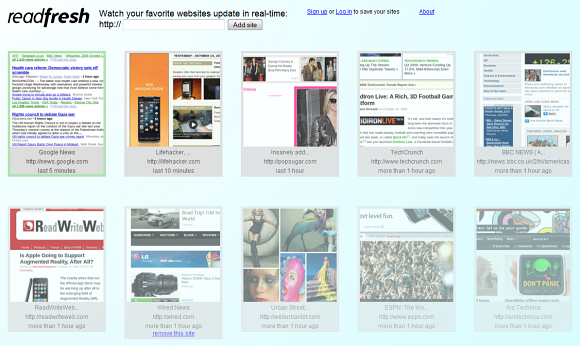 When it comes to keeping up with blogs and other websites, a common complaint is information overload. Even if you subscribe to receive site updates through an RSS reader, it’s easy to wind up with more items in your reader than you have time to actually read. You may still want to read some of those posts, but if you don’t want to read all of them, searching through your reader for the important news items can be almost as much of a burden as going from site to site.
When it comes to keeping up with blogs and other websites, a common complaint is information overload. Even if you subscribe to receive site updates through an RSS reader, it’s easy to wind up with more items in your reader than you have time to actually read. You may still want to read some of those posts, but if you don’t want to read all of them, searching through your reader for the important news items can be almost as much of a burden as going from site to site.
Because of the ongoing concern of information overload, many people who previously relied on RSS have drifted away from it. However, RSS readers are evolving to solve these issues and improve their usefulness.
Parse.ly
 Able to learn from the blog posts and articles you read, star and delete, Parse.ly offers a tool to read the news that actually learns from what you do. While you don’t actually point to specific sources where you’d prefer to receive your news from, you can still read the most important updates about topics you consider important without much difficulty. The service even ranks articles by which you’ll want to read first, based on your interests and reading habits.
Able to learn from the blog posts and articles you read, star and delete, Parse.ly offers a tool to read the news that actually learns from what you do. While you don’t actually point to specific sources where you’d prefer to receive your news from, you can still read the most important updates about topics you consider important without much difficulty. The service even ranks articles by which you’ll want to read first, based on your interests and reading habits.
Lazyfeed
For many people, an RSS reader is a simple way to collect information on a particular topic. You add several blog feeds related to your area of interest and check in every so often to see what’s happening. With Lazyfeed, you can add topics to your user page and get updates from a variety of different websites — without having to go searching for new blogs to add or to sort through similar stories from a variety of different websites. You can add very specific topics, making Lazyfeed more useful.

Screenshot by TechCrunch.
RSSMeme
More than a few people who used to rely on an RSS reader have slowly drifted away because of the already mentioned information overload. Instead, they rely on friends to pass along interesting links and colleagues to share interesting news online. RSSMeme takes a similar approach to choosing which articles to point readers to. The site pulls together the articles that are shared across Google Reader, ranking those that have been heavily shared higher. The assumption is that if a high number of Google Reader users have found a story useful or important, it’s more likely to be worth your time to read.

Readfresh
For some users, RSS is just a way to see when a site updates. Since many sites can update multiple times in a day, having a tool that shows you when your favorite websites have updated serves that purpose more effectively. Readfresh is a very simple way to check in on your favorite websites: as long as you’re only keeping an eye on a short list of blogs or other sites, you can click through quickly to see just what’s new.

The future of RSS
There are several startups currently working on the question of where RSS readers and similar tools will go next. A number of approaches have been announced, but are not yet ready for public use. One such service is Insttant: the tool will measure the popularity of links across sites like Google Reader and Twitter, bringing the news items that are getting the most traction together on one page for readers. This technique, known as sentiment analysis, is gaining popularity.
There are still some problems that the latest generation of RSS readers are working on: the ability of services to adapt to individual readers’ interests is still developing, for instance. However, new tools are constantly emerging.
About the author:
Thursday Bram writes about technology and small business. You can find Thursday on Twitter and on her own blog at ThursdayBram.com.



























